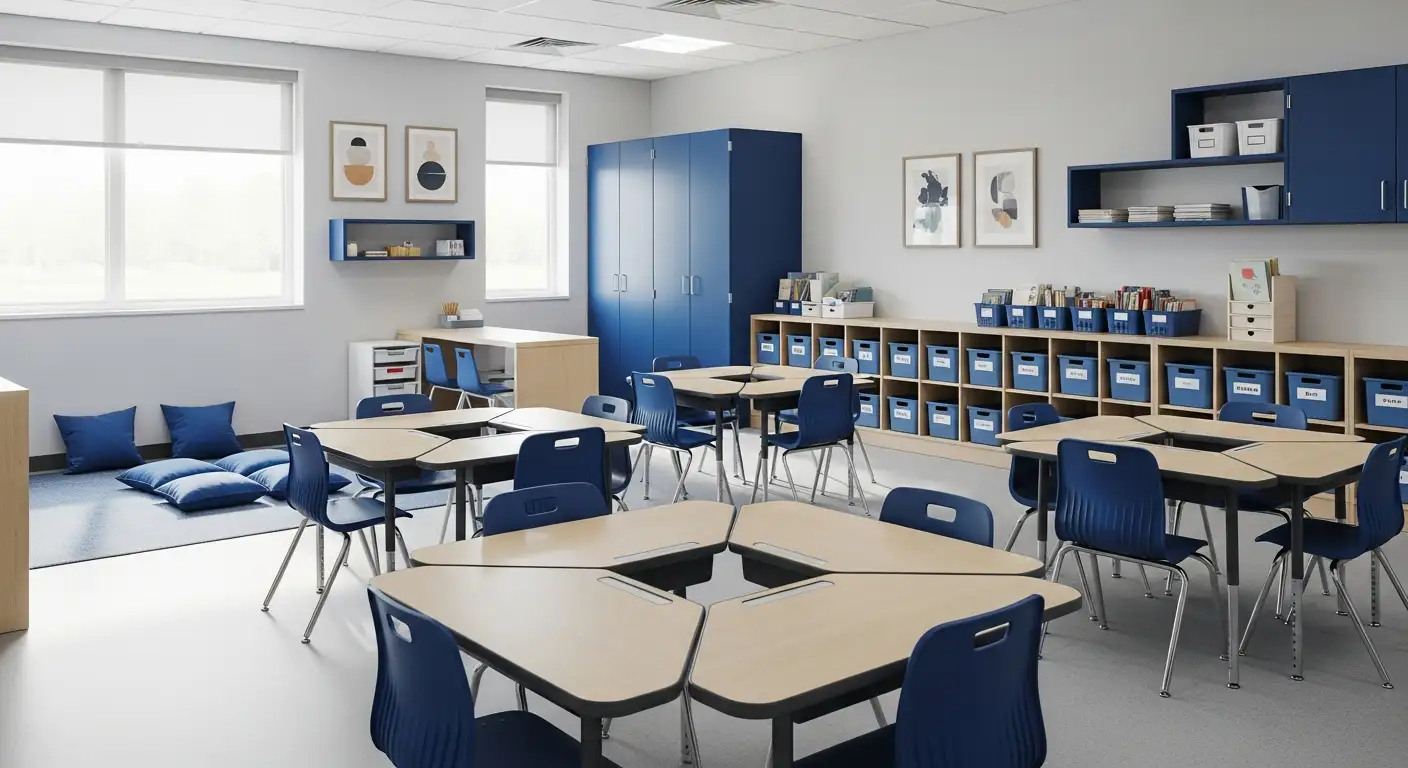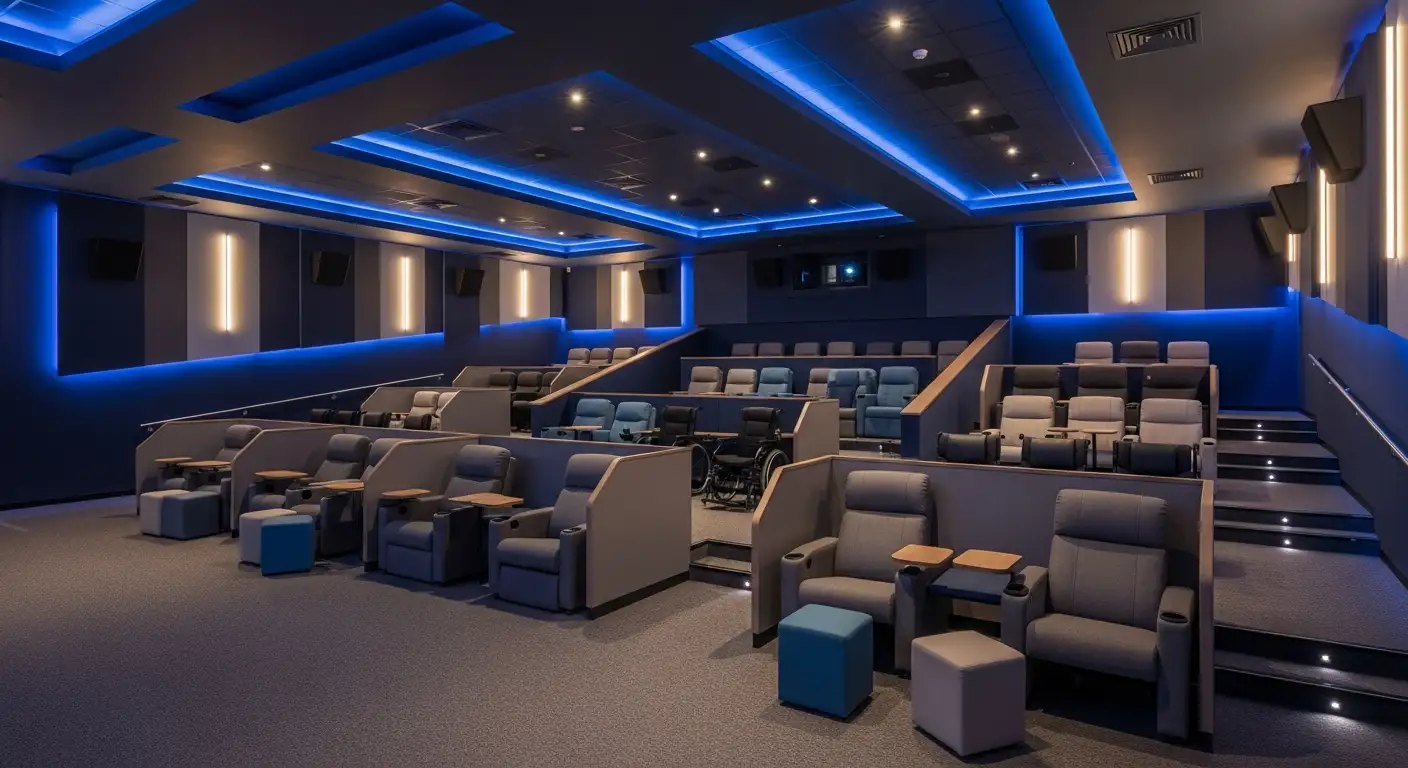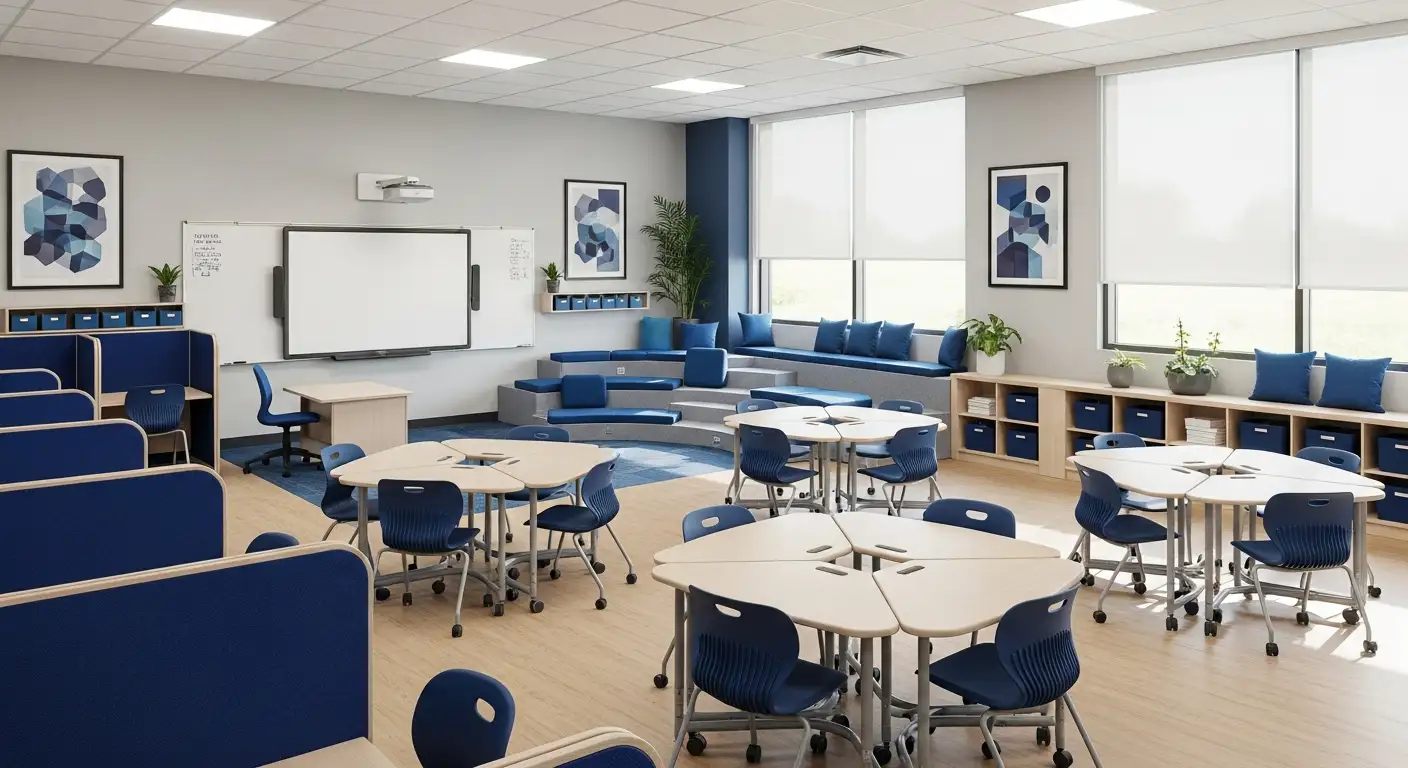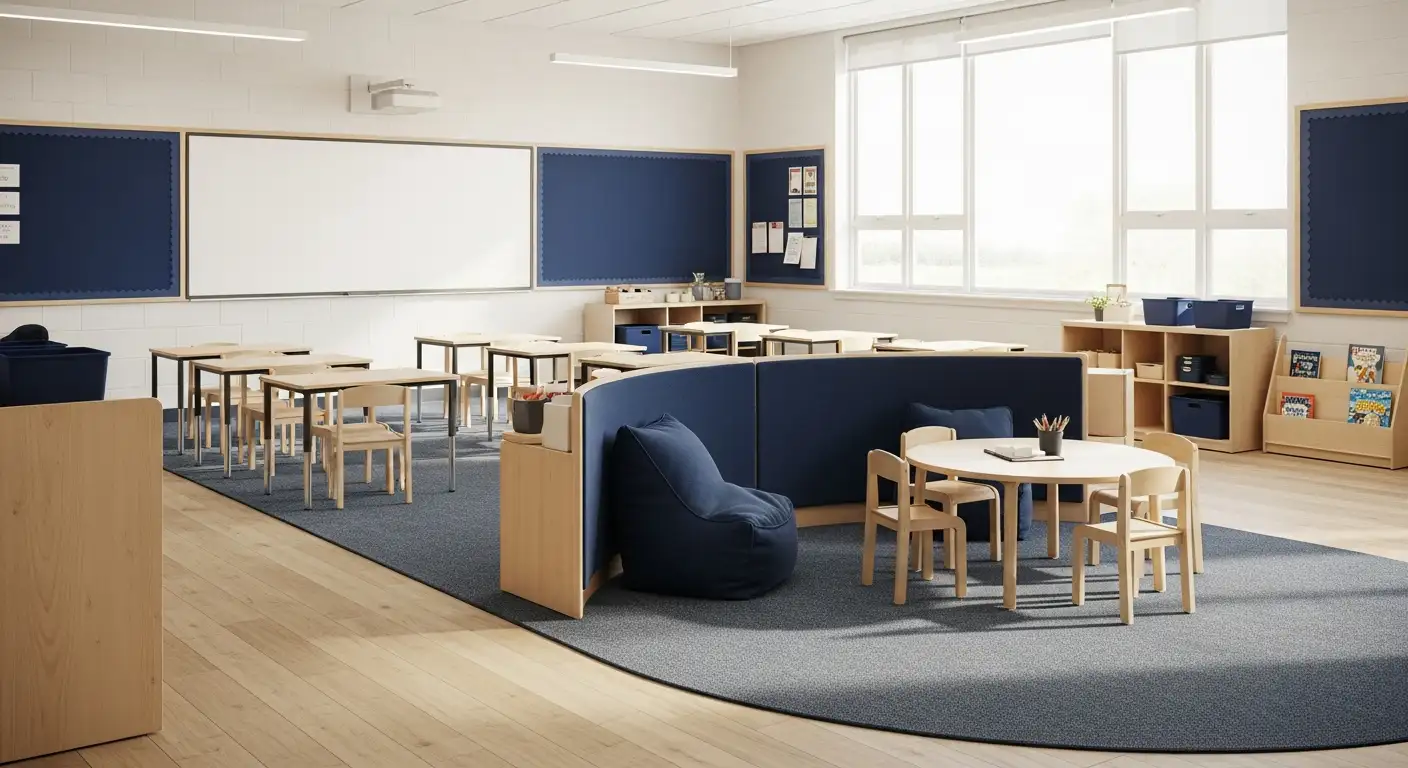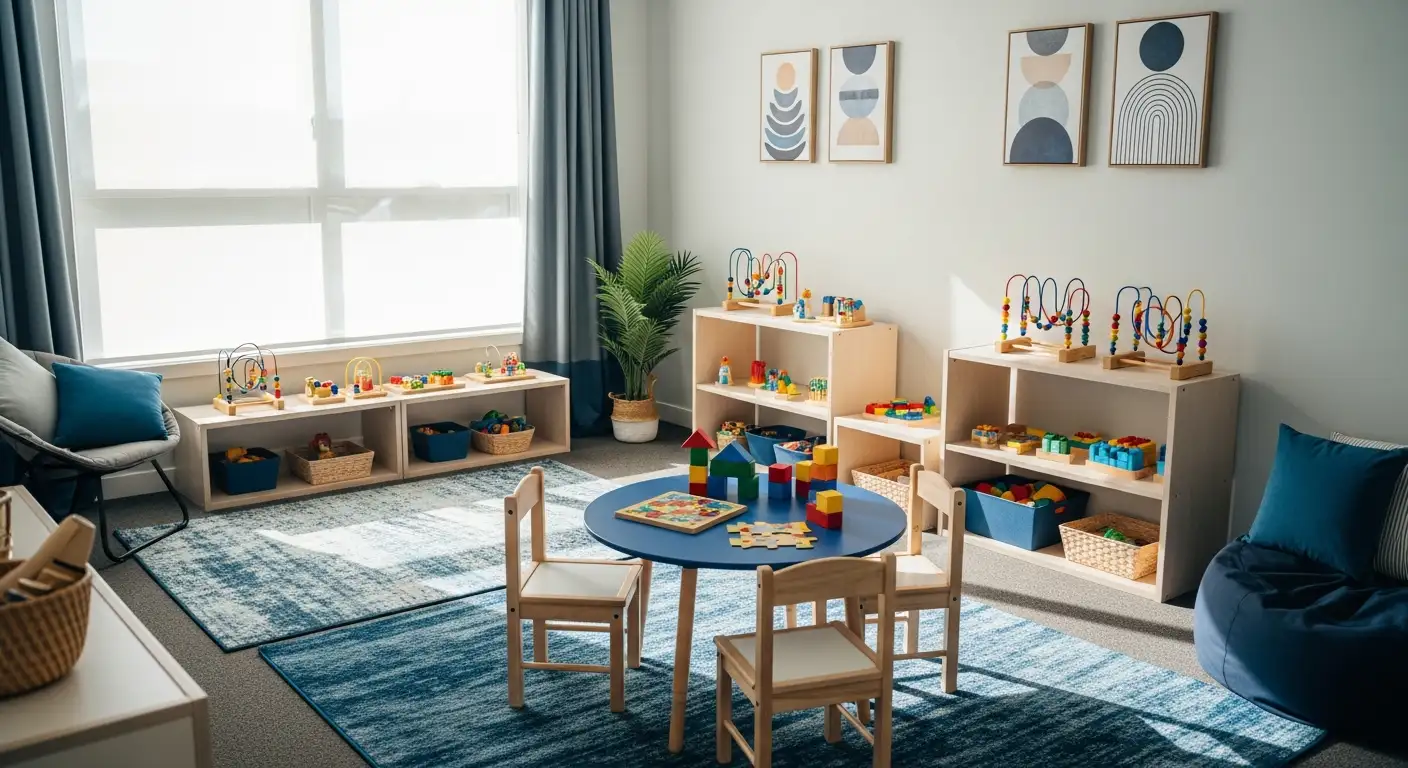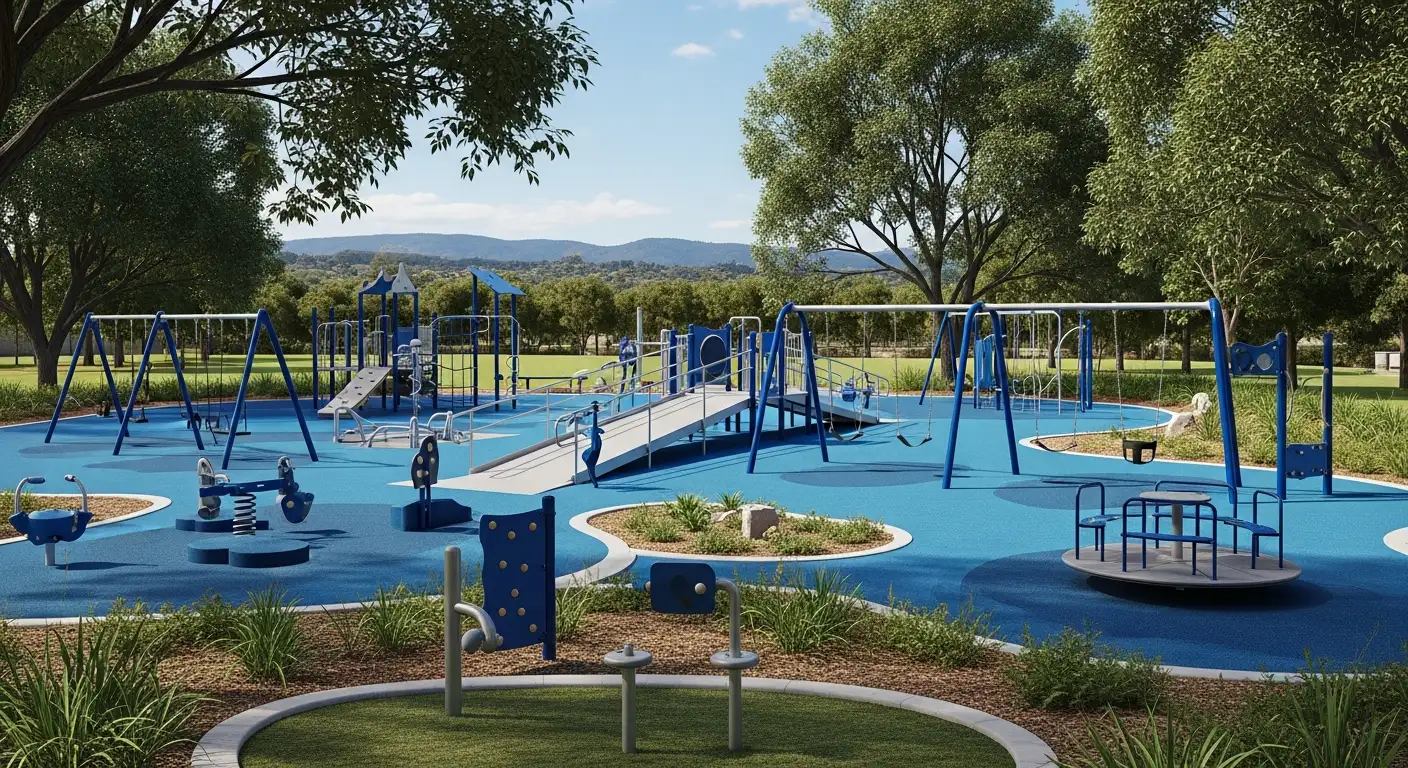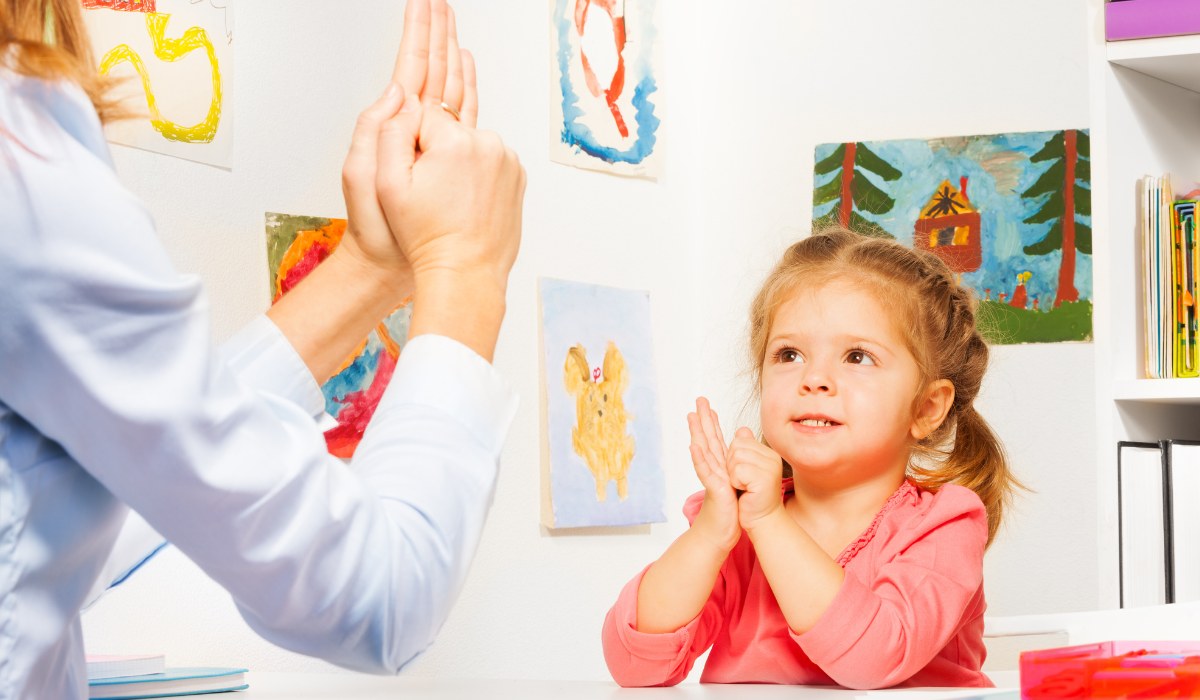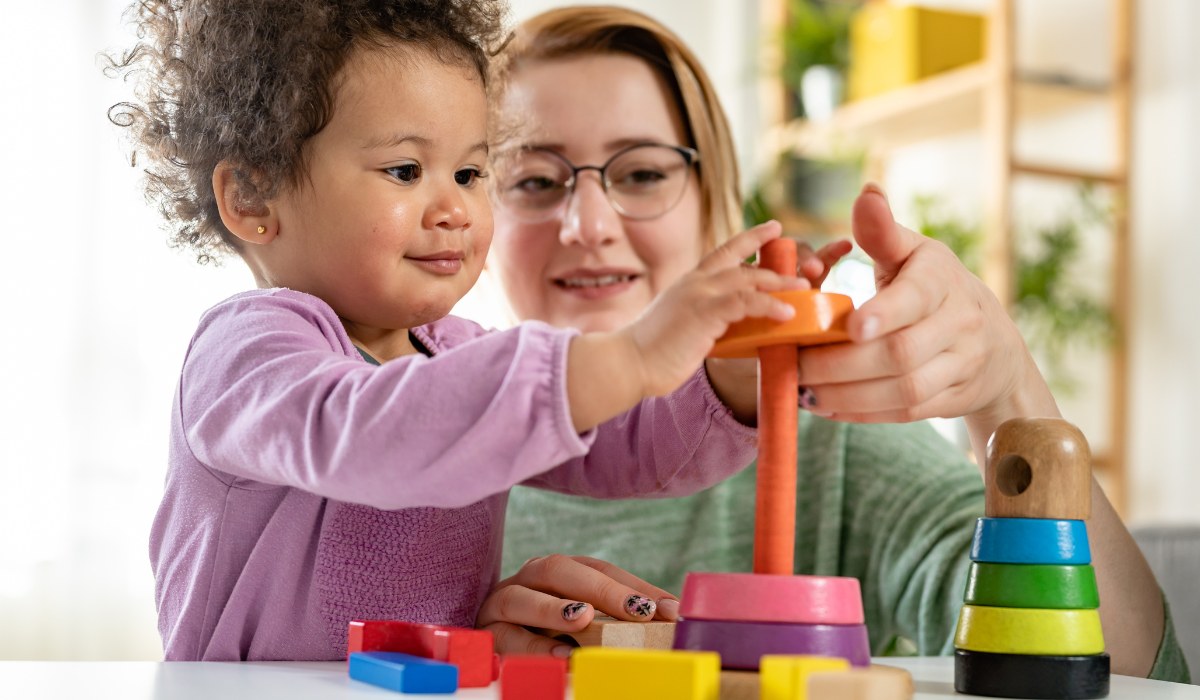How to Use Social Skills Groups to Support Autism
Enhancing Social Competence in Autism Through Targeted Group Interventions

Understanding the Role of Social Skills Groups in Autism Support
Social skills challenges are a core aspect of autism spectrum disorder (ASD), impacting communication, relationships, and daily interactions. Social skills groups, grounded in Applied Behavior Analysis (ABA) therapy principles, offer a structured and supportive environment for individuals with autism to learn, practice, and generalize essential social behaviors. This article explores how social skills groups operate within ABA therapy, the techniques they employ, the goals they pursue, and the outcomes they drive, highlighting the importance of these interventions in fostering social growth and quality of life for children and adolescents on the spectrum.
Applied Behavior Analysis (ABA) Therapy: The Foundation of Social Skills Groups
What is Applied Behavior Analysis (ABA) therapy and how is it used to support individuals with autism?
Applied Behavior Analysis (ABA) therapy is a scientifically grounded method that seeks to understand and modify behaviors by changing environmental factors. It primarily aims to enhance beneficial skills like communication and social interaction, while reducing challenging behaviors. ABA relies heavily on positive reinforcement, rewarding desirable behaviors to encourage their repetition.
Techniques employed in ABA
ABA uses several practical strategies to teach and reinforce social skills. These include breaking down complex social behaviors into smaller, manageable steps—a process called task analysis. Techniques like Behavioral Skills Training (BST), which combines instruction, modeling, rehearsal, and feedback, help children learn appropriate social behaviors. Role-playing, modeling by peers, and visual supports such as checklists and conversation flowcharts assist learners throughout training.
Role of individualized programs
Each ABA therapy program is tailored to the unique needs of the individual. Assessments are conducted before intervention to identify specific social skill deficits. Goals are personalized and involve the learner in planning to boost engagement. Data collection and progress monitoring enable therapists to adjust approaches based on measurable outcomes. Parental involvement and real-world practice help generalize skills beyond therapy settings.
ABA's effectiveness in autism support
Numerous studies confirm that ABA enhances social competence in children with autism. Social skills groups using ABA principles improve communication, friendship quality, and emotional regulation. The structured, supportive environment helps children practice and internalize social behaviors, fostering self-confidence and ongoing social growth. Overall, ABA therapy is a foundational tool for developing social skills, empowering individuals with autism to navigate social interactions more effectively.
Specialized Providers and Companies Delivering ABA-Based Social Skills Groups
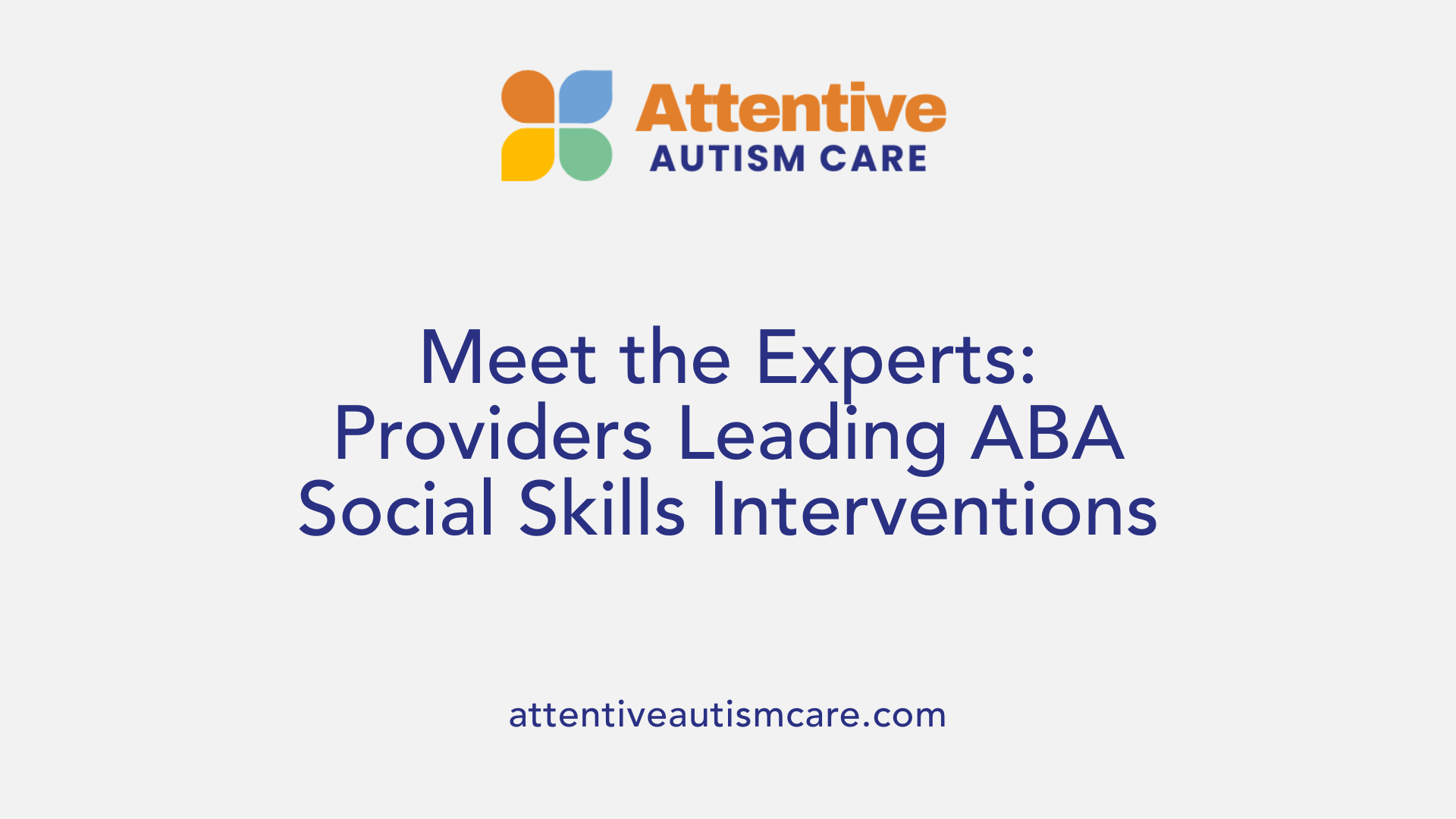
What types of professionals and specialized companies provide ABA therapy for autism?
ABA therapy for autism is delivered by a diverse team of professionals skilled in behavior analysis and autism-specific interventions. The main providers include:
- Board Certified Behavior Analysts (BCBAs): These clinicians oversee assessment, design individualized treatment plans, and supervise therapy delivery.
- Registered Behavior Technicians (RBTs): They implement therapy protocols directly with clients, following BCBA guidance.
- Assistant Behavior Analysts (BCaBAs): They assist BCBAs in treatment planning and provide direct services under supervision.
Specialized companies dedicated to autism services often employ this team structure to provide tailored ABA social skills groups. These companies focus on delivering evidence-based strategies, including social skills training groups, peer-mediated interventions, and behavioral skills training.
Roles of clinicians and technicians
Clinicians (BCBAs) are responsible for conducting individualized social skills assessments, developing and adjusting goals, and ensuring that interventions are based on data tracking and progress monitoring.
Technicians (RBTs and BCaBAs) carry out therapeutic activities such as role-plays, modeling, prompting, and reinforcement within structured social skills groups. They also support generalization practices by facilitating real-world application of learned social behaviors.
Specialized companies focusing on autism services
Companies focus exclusively on delivering ABA therapy often incorporate multi-disciplinary teams, including speech-language pathologists and occupational therapists, to address overlapping developmental needs. These providers combine structured ABA approaches with social skills training models like PEERS and Social Stories to enhance social competence and relationships in children with autism.
Interdisciplinary collaboration in ABA programs
In modern ABA social skills groups, collaboration between behavior analysts and other professionals promotes comprehensive care. Speech therapists support communication goals, while occupational therapists aid sensory integration and social engagement. This team approach ensures social skills training integrates smoothly into broader developmental support plans, improving outcomes for children with autism.
This interdisciplinary and professional structure is vital to the delivery of effective, individualized ABA social skills interventions, helping children develop critical social competencies and improved quality of life.
Core Components and Techniques Used in Social Skills Groups
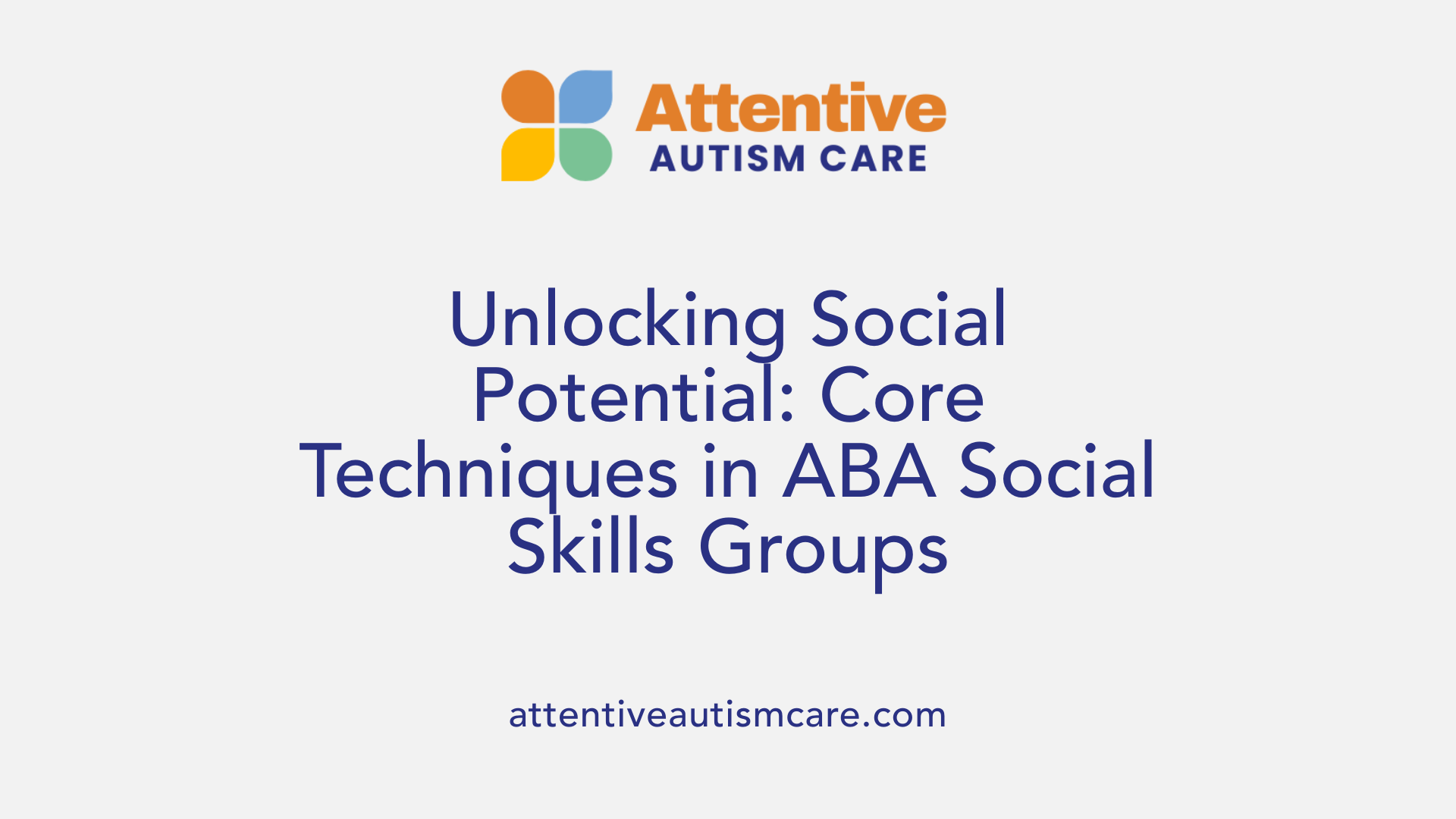
How do ABA principles like task analysis, reinforcement, and prompting contribute to social skills training?
ABA uses task analysis to break down complex social behaviors into manageable, step-by-step components. This approach makes learning intricate social interactions more accessible for children with autism. Positive reinforcement is applied consistently to encourage practicing appropriate social behaviors, using praise and rewards to strengthen these skills. Prompting guides learners toward the correct responses or behaviors when needed, gradually fading as independence increases.
What elements make up Behavioral Skills Training (BST) in social skills groups?
BST integrates four critical steps: instruction, modeling, rehearsal, and feedback. Instruction involves clear teaching of targeted social skills, while modeling demonstrates these behaviors by therapists or peers. Rehearsal allows children to practice skills in a safe environment, and immediate feedback helps fine-tune their responses. Together, these components enhance skill acquisition and confidence.
How are visual supports and social narratives incorporated?
Visual aids such as checklists, conversation flowcharts, and visual schedules support learners during practice sessions, reducing anxiety and clarifying expectations. These supports can be faded over time as proficiency grows. Social narratives, including personalized social stories, comic strip conversations, and social scripts, provide accessible and relatable ways to understand social situations and appropriate responses.
What role do peer-mediated and group activities play?
Group instruction and peer play sessions enable children to apply learned skills in real social contexts, promoting natural interactions. Peer-mediated interventions involve typically developing peers who model and practice social behaviors with children with autism, facilitating social competence and friendship formation. These settings offer immediate opportunities for rehearsal and reinforcement.
How does generalization ensure skills transfer to real-life settings?
Generalization strategies such as priming—preparing a child for upcoming interactions—and video modeling help embed social skills beyond the therapy environment. Practicing in varied settings, including classrooms and community spaces, combined with caregiver involvement, encourages children to successfully apply skills in diverse social situations.
| Component | Description | Benefit |
|---|---|---|
| Task Analysis | Breaking social skills into small steps | Simplifies learning complex behaviors |
| Positive Reinforcement | Using praise and rewards | Motivates consistent social behavior practice |
| Behavioral Skills Training | Instruction, modeling, rehearsal, feedback | Structured skill building |
| Visual Supports & Social Narratives | Checklists, flowcharts, personalized stories | Enhances understanding and reduces anxiety |
| Peer-Mediated & Group Activities | Group play and peer modeling | Encourages natural social interaction |
| Generalization Techniques | Priming, video modeling, varied practice environments | Promotes real-world application of social skills |
Goals and Outcomes of Social Skills Training Within ABA Therapy
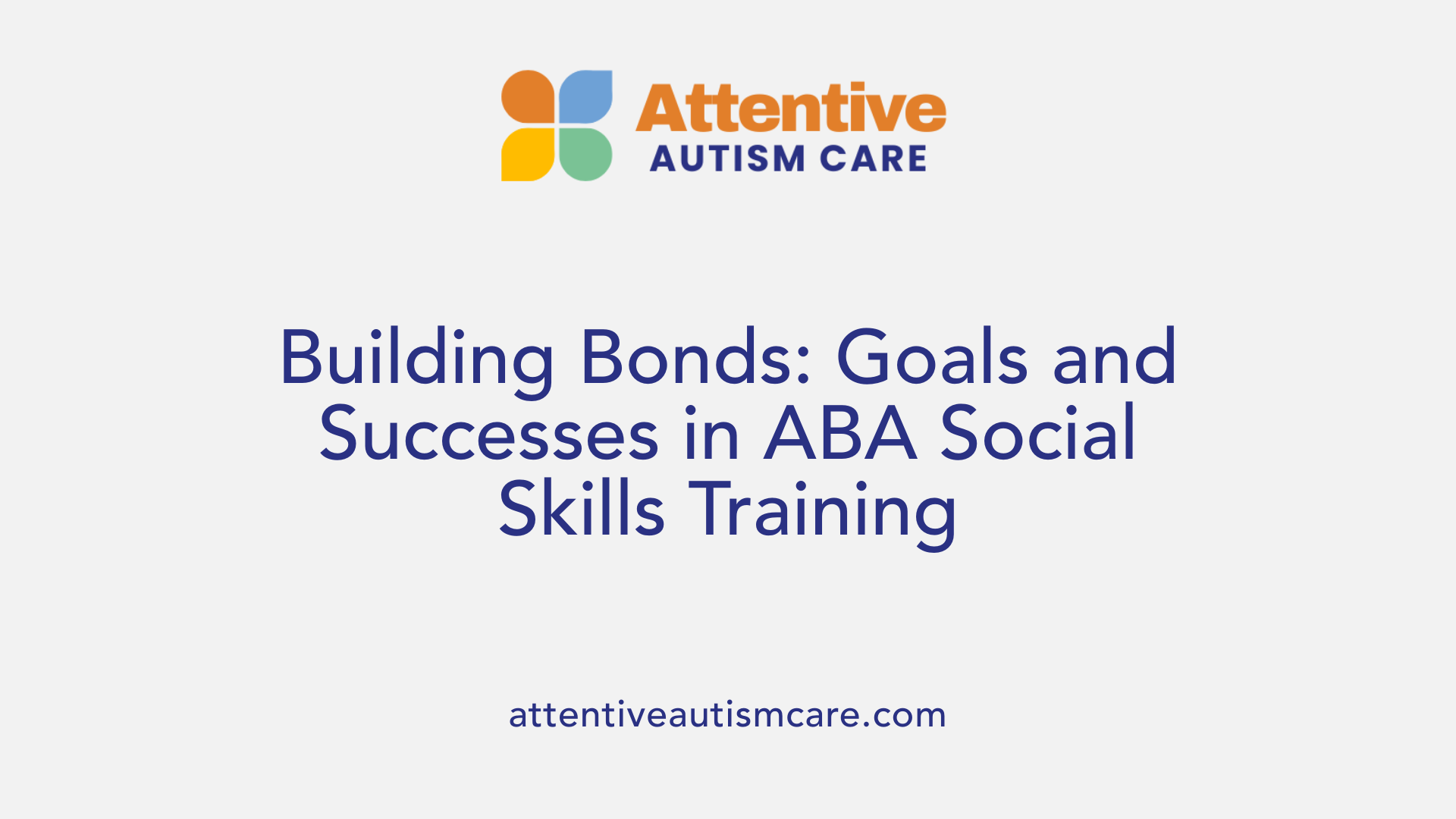
What are the typical goals and outcomes of ABA therapy for individuals on the autism spectrum?
ABA therapy targets enhancing a broad range of social skills vital for individuals with autism. Typical goals include improving communication abilities, such as both verbal expression and understanding nonverbal cues like body language and facial expressions. Emotional regulation skills are also emphasized, helping children recognize and manage their feelings effectively.
The therapy focuses on building relationship skills, including forming and maintaining friendships through appropriate social interactions like sharing, turn-taking, and conflict resolution. Individualized goal setting is central to ABA; learners participate in planning their objectives, which heightens engagement and ensures relevance to their unique needs.
Typical social skills targets
- Nonverbal communication: gestures, eye contact, and facial expressions
- Conversational skills: initiating, responding, and maintaining topics
- Perspective-taking and empathy
- Emotional regulation and expression
- Conflict resolution and cooperation
Improvement areas
Social skills training fosters better communication and interpersonal understanding. It helps children with autism better interpret social cues and adjust their behaviors accordingly. This progress often translates into increased social competence and enhanced friendship quality.
Impact on self-confidence and social competence
Developing these skills boosts self-esteem and promotes ongoing social growth. Children become more confident in expressing thoughts and feelings, which encourages positive social participation and deeper, more meaningful relationships.
Evidence shows social skills groups within ABA significantly improve social competence, friendship quality, and reduce loneliness in children and adolescents with ASD. With individualized, evidence-based training and consistent reinforcement, many children experience notable gains in social functioning and emotional well-being.
Measuring and Evaluating Progress in Social Skills Groups
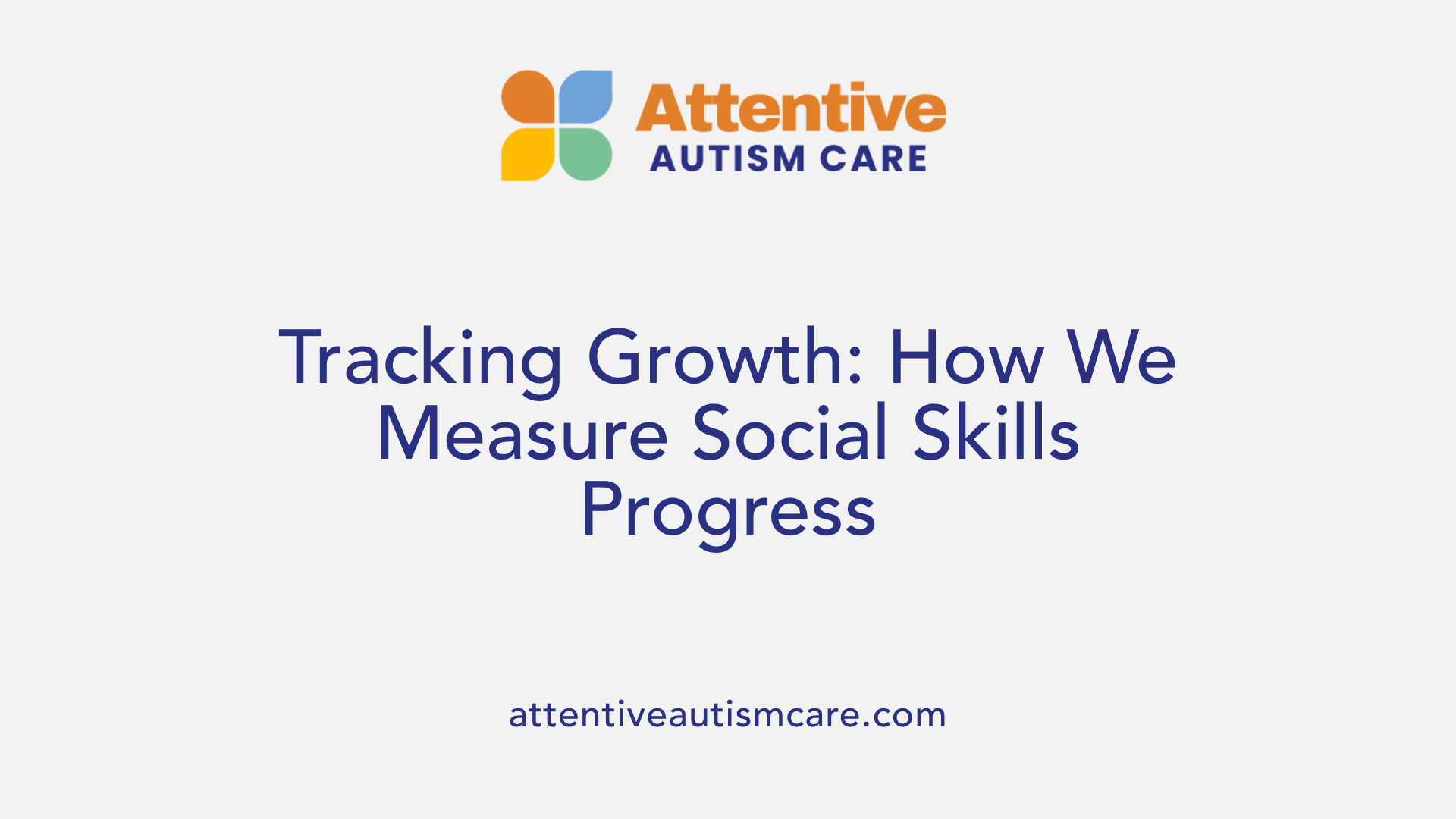
How is the effectiveness of ABA therapy measured and evaluated?
The effectiveness of ABA therapy, particularly within social skills groups, is continuously assessed through systematic data collection and progress monitoring. Therapists gather detailed information on children’s communication, socialization, and adaptive behaviors to track improvements and identify areas needing further support.
Continuous data collection and progress monitoring
Ongoing collection of behavioral data is fundamental. It enables therapists to observe subtle changes in social skills and to confirm whether interventions are producing the desired outcomes. Keeping accurate records facilitates individualized treatment adjustments, ensuring goals remain relevant and achievable.
Standardized assessments
Several validated tools are used to objectively measure social and adaptive skills over time:
- Vineland Adaptive Behavior Scales, Third Edition (Vineland-3): Measures communication, socialization, daily living skills, and motor skills.
- Verbal Behavior Milestones Assessment and Placement Program (VB-MAPP): Evaluates language and social milestones critical for children with autism.
- Essential for Living (EFL): Focuses on functional skills and problem behaviors.
These assessments help guide goal setting and evaluate overall progress during therapy.
Use of Patient Outcome Planning Calculator (POP-C)
The POP-C is a clinical tool that assists in determining optimal treatment dosage based on individual factors such as symptom severity and current functional skills. Research confirms that appropriate treatment intensity, guided by tools like the POP-C, corresponds with better social skills acquisition and sustained progress.
Importance of data-driven decision making and treatment adjustment
Collecting and analyzing data allows for dynamic treatment plans that adapt to each child’s evolving needs. This data-driven approach fosters more efficient interventions and maximizes social skills gains, tailoring strategies to the learner’s unique profile.
Feedback from families and educators
Families and educators provide essential perspectives on how learned skills transfer to real-life environments like home and school. Their input helps verify generalization of social skills and informs therapists about any additional support needed. Collaboration encourages consistency across settings, enhancing the child’s social integration.
| Evaluation Method | Purpose | Details and Impact |
|---|---|---|
| Continuous Data Collection | Track daily progress and behavior changes | Enables timely interventions and goal adjustments |
| Standardized Assessments | Measure skill development objectively | Tools like Vineland-3, VB-MAPP, and EFL highlight strengths and needs |
| Patient Outcome Planning Calculator (POP-C) | Guides treatment dosage based on individual factors | Ensures optimal intensity for effective social skills training |
| Data-Driven Treatment Adjustment | Refines therapy based on ongoing results | Leads to more personalized, effective interventions |
| Feedback from Families/Educators | Confirms skill generalization across settings | Supports holistic understanding and reinforcement of progress |
Innovations and Alternatives: Technology and Social Skills Training

How do face-to-face social skills training (F2F-SST) and Behavioral Intervention Technologies (BITs) compare?
Face-to-face social skills training typically occurs in structured group settings that teach vital social interaction skills using evidence-based protocols such as PEERS and Social Stories. These in-person sessions focus on improving social competence, friendship quality, and reducing feelings of loneliness, particularly for children and adolescents with autism spectrum disorder (ASD).
Behavioral Intervention Technologies, on the other hand, deliver social skills training through online software, avatars, and robots in virtual or controlled environments. BITs are designed to supplement or sometimes replace in-person training and offer a more accessible and less anxiety-provoking learning experience.
What role do computer programs, avatars, and robots play in BITs-SST?
These technologies function as interactive tools and social partners that facilitate learning and practicing social skills.
- Computer programs provide structured lessons and exercises.
- Avatars simulate social interactions to rehearse conversational and nonverbal skills.
- Robots serve as engaging and consistent models for social behavior, particularly valuable for children who may struggle with unpredictable human interactions.
What advantages does BITs-SST offer, and what barriers does it address?
BITs-SST offers several important benefits:
- Increased accessibility for families and individuals who face transportation challenges or lack local programs.
- Reduced social anxiety by allowing practice in private settings.
- Opportunities to repeat and reinforce skills in safe, controlled environments.
Moreover, BITs help mitigate barriers such as shortages of trained facilitators and the high costs associated with traditional face-to-face groups.
How effective are F2F-SST and BITs-SST in improving social skills?
A meta-analysis of 19 studies found both F2F-SST and BITs-SST yield significant improvements in social skills. The effect sizes were medium to high — g=0.81 for face-to-face training and g=0.93 for BITs — indicating comparable effectiveness with no significant differences between modalities. These findings suggest that technology-based interventions can be just as beneficial as traditional methods.
What does future research need to explore regarding BITs-SST?
While promising, BITs require further investigation with larger sample sizes and standardized outcome measures. Future studies should examine:
- Long-term retention and generalization of skills learned through technology.
- Optimal integration of BITs with traditional face-to-face methods.
- How specific technologies (avatars vs. robots vs. software) impact different age groups and social skill deficits.
Overall, technology offers exciting alternatives and supplements to traditional social skills training within ABA therapy, expanding access and tailoring intervention delivery to individual needs.
The Transformative Impact of Social Skills Groups on Autism Support
Social skills groups grounded in Applied Behavior Analysis offer a powerful, evidence-based framework for supporting individuals with autism in acquiring and generalizing meaningful social abilities. By combining structured, individualized instruction with group interactions and peer involvement, these programs address fundamental social challenges characteristic of autism. The integration of data-driven assessment ensures continual refinement and maximized outcomes. Additionally, emerging technologies complement traditional approaches, broadening accessibility and practice opportunities. Together, these advances underscore the vital role of social skills groups in fostering communication, friendship, emotional regulation, and overall social competence—empowering children and adolescents on the spectrum to thrive in their communities and relationships.
References
- How to Teach Social Skills Using ABA Principles
- Social Skills Training for Autism Spectrum Disorder: a Meta ...
- Working With ABA And Social Skills Groups For Autism
- The Role of Social Skills Groups in ABA Therapy for Children
- Social Skills Training in Applied Behavior Analysis? ASD
- The Importance of Social Skills Therapy in Autism
- Applied Behavior Analysis (ABA)
- ABA Therapy Goals: 25 Practical Examples & Timelines
- Applied Behavior Analysis (ABA)
- Applied Behavioral Analysis (ABA) Therapists in New Mexico



